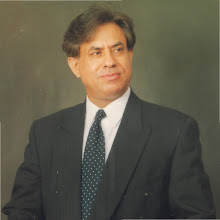In more than 100 countries, people are getting not only more numerous, but younger. Youth bulges, combined with economic stagnation and unemployment, can burden these countries with disproportionately high levels of violence and unrest—severely challenging their hopes for social and economic stability. Pakistan is one such country
Pakistan currently has the largest number of young people in its history, with approximately 25 million people between the ages of 15 and 24. Pakistani youth makes up 63% and adolescents nearly 43 % of the total Pakistani population. Illiteracy, lack of awareness, poverty and dearth of focused attention to youth-related problems add to the complexity of the problems currently faced by the country in social sector development.
The predominance of young adults can be a social challenge and a political hazard. Our economy and labor markets have been unable to keep pace with population growth, contributing to high rates of unemployment. While unemployment tends to be high in Pakistan in general, it is among young adults three to five times as high as overall adult rates.
Young men in rural areas are often hardest hit relative to their expectations. Agriculture is the single largest source of livelihood worldwide, but many young rural men expecting to inherit land increasingly find themselves disinherited.
With few opportunities in rural areas, young people in Pakistan are increasingly forced to leave behind more traditional lifestyles and migrate to cities in search of work, education, and urban amenities.
Many urban areas are thus now home to significant, and potentially volatile, youth bulges. Rapidly industrializing cities and frontier areas can be spawning grounds for political unrest because thousands of young men migrate to these sites in search of already in short supply livelihoods.
Yet urbanization is proceeding faster than municipalities can provide infrastructure, services, and jobs. Municipal governments in Pakistan are the least able to muster the human and financial resources to contend with these problems, especially when the poorest, nontaxable segment of the urban population continues to grow rapidly.
Most young people, men and women, work in agriculture. Other types of work are segregated by gender, with females engaged in stitching, embroidery, and knitting (largely based at home) while young men work in factories, are self-employed, or perform skilled labor. Young people’s attitudes about gender roles remain traditional, with well-defined lines between the domains of males and females.
The UN projected that by 2007, for the first time ever, more people would be living in cities than in rural areas. This urban share could top 60 percent by 2030—with almost all of this growth projected to occur in the developing world.
We have a large number of youth between 18 and 35 who are properly educated, but have nothing to do. Urban discord, more than the rural sort, afflicts diverse social classes, including the angry unemployed. The risks of instability among youth are increased when skilled members of elite classes are marginalized by a lack of opportunity.
It isn’t difficult to find contemporary parallels. The collapse of the Communist regime in the Soviet Union in the early 1990s in part to the mobilization of large numbers of discontented young men who were unable to put their technical educations to use due to party restrictions on entering the elite. And Samuel P. Huntington, Harvard professor and author of the controversial treatise on the Clash of Civilizations, has pointed to connections between tensions in the Middle East (where 65 percent of the population is under the age of 25) and the unmet expectations of skilled youth. Many Islamic countries, he argues, used their oil earnings to train and educate large numbers of young people, but with little parallel economic growth few have had the opportunity use their skills.
Pakistan where a large youth bulges, coupled with high rates of urban growth and shortages of employment opportunities, is already creating a very high risk of conflict.
The US has begun to take notice. In April 2002, in a written response to congressional questioning, the US, CIA noted that “several troublesome global trends—especially the growing demographic youth bulge in developing nations (Pakistan included) whose economic systems and political ideologies are under enormous stress—will fuel the rise of more disaffected groups willing to use violence to address their perceived grievances.” The CIA warned that current US counter-terrorist operations might not eliminate the threat of future attacks because they fail to address the underlying causes that drive terrorists.
Fortunately, demographics are not destiny. But the likelihood of future conflict may ultimately reflect how Pakistan chooses to deal with its demographic challenges.
There are nevertheless examples of some countries, where policies were in place that provided young men with occupations and opportunities—including land reform and frontier settlement schemes, migration abroad, industrialization, and the expansion of military and internal security forces. The latter strategy probably helped regimes such as North Korea, China, and Turkmenistan that maintain political stability during the post-Cold War era despite large proportions of young adults.
In the short term, Pakistan government will need to tackle the underlying factors contributing to discontent among young people, including poverty and the lack of economic opportunity. And the government can address part of the risk associated with youth unemployment by investing in job creation and training, boosting access to credit, and promoting entrepreneurship.
Ultimately, however, the only way to achieve the necessary long-term changes in age structure will be through declines in fertility. Government can facilitate fertility decline by supporting policies and programs that provide access to reproductive health services—voluntary family planning services and maternal and child health programs and counseling, including providing accurate information for young adults—and by promoting policies that increase girls’ educational attainment and boost women’s opportunities for employment outside the home. (www.asifjmir.com)
A Distinct Candle is Extinguished!
-
“I am announcing, with a heavy heart, the sudden demise of my beloved
father, Asif Javed Mir, due to heart failure on 18th December,2013. I
request to ever...
11 years ago





No comments:
Post a Comment